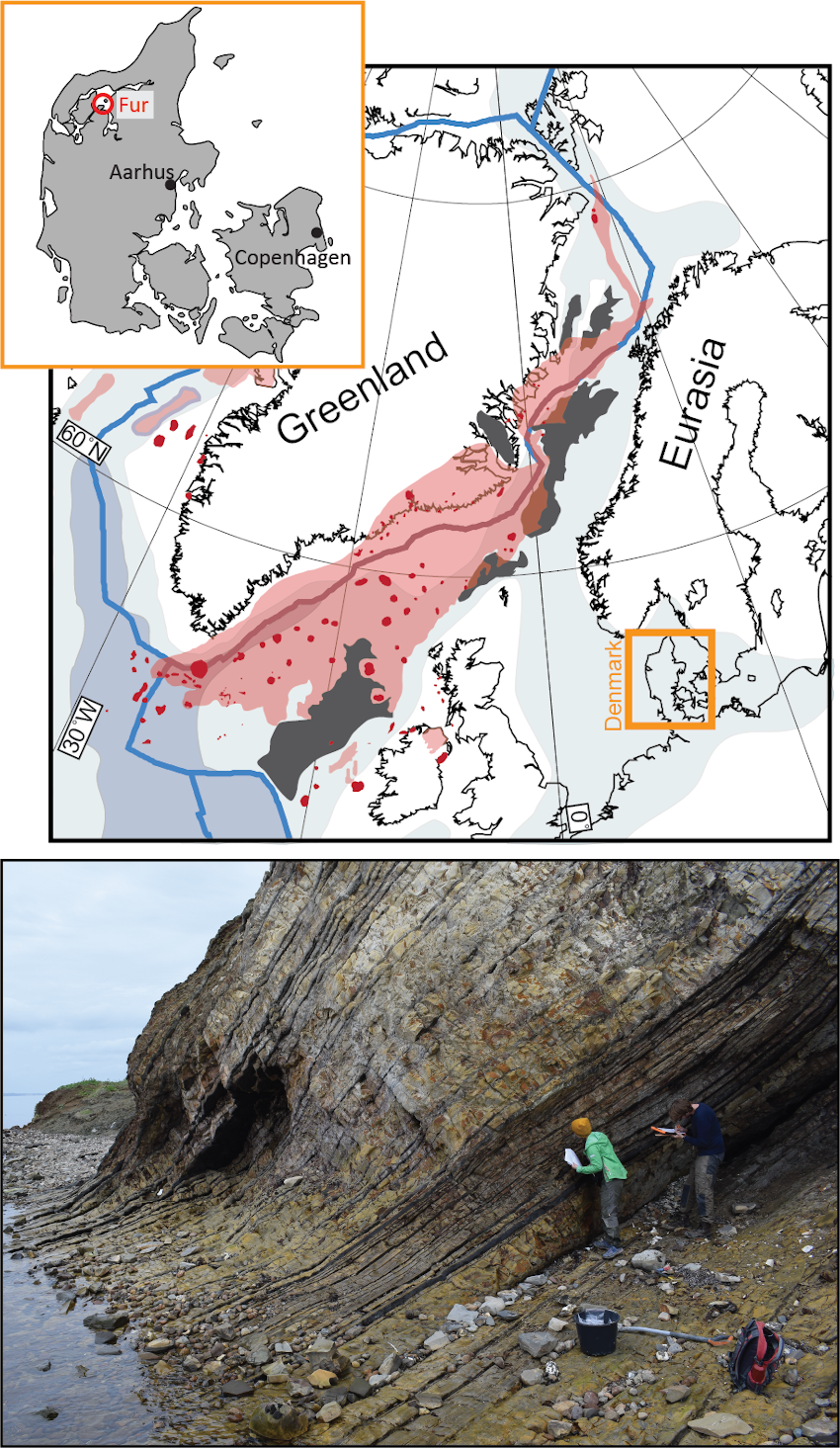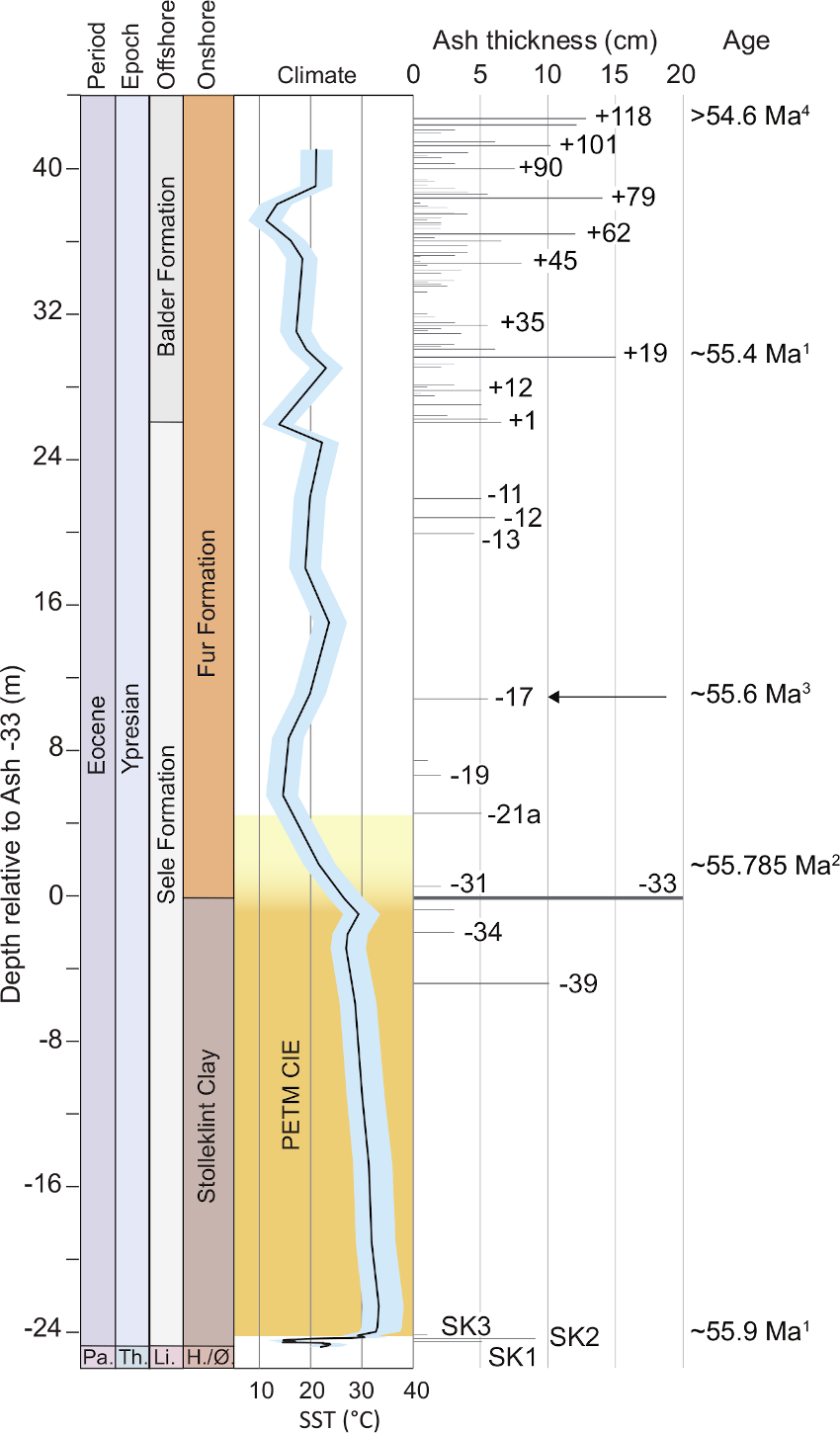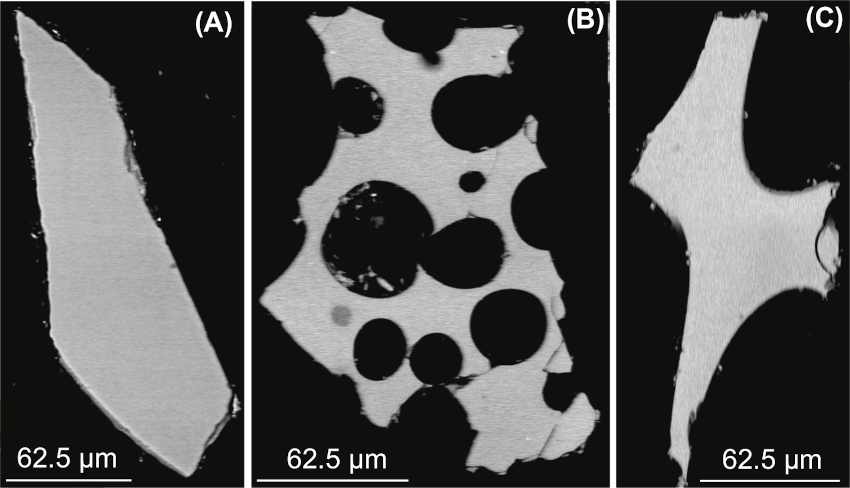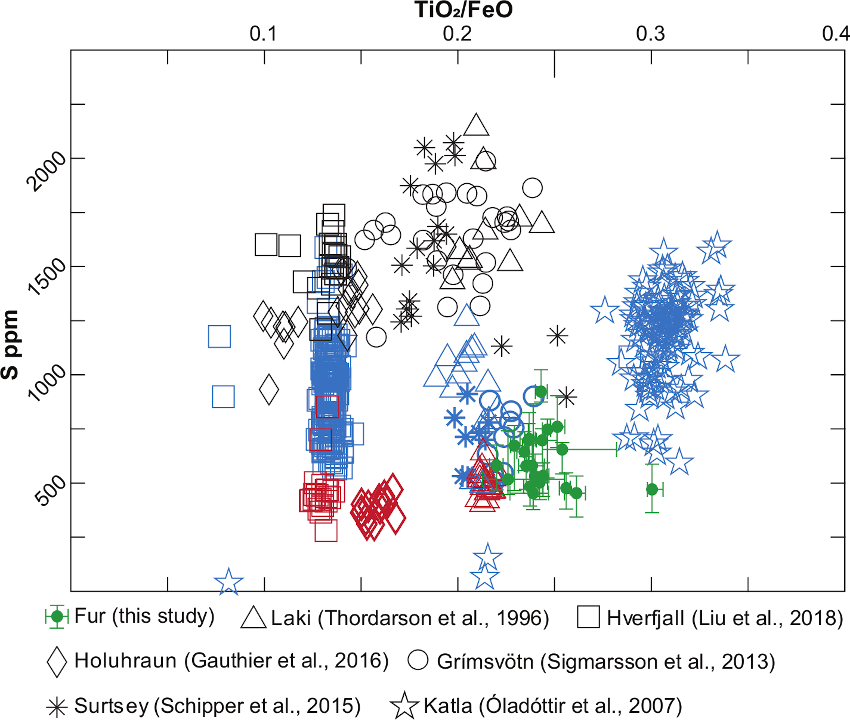November 2020 LIP of the Month
Violent magma-water interaction during the emplacement of the North Atlantic Igneous Province: The largest explosive basaltic eruptions ever found?
Ella W. Stokke1, Emma J. Liu2,3, Morgan T. Jones1
1Centre for Earth Evolution and Dynamics (CEED), University of Oslo, PO Box 1028 Blindern, 0315, Oslo, Norway.
2Earth Sciences, University College London, 5 Gower Place, London, WC1E 6BS, UK.
3Department of Earth Sciences, University of Cambridge, Downing Street, Cambridge CB2 3EQ, UK.
Email: e.w.stokke@geo.uio.no
This is a summary of Stokke et al. (2020a).
Stokke, E. W., Liu, E. J. and Jones, M. T. (2020a) Evidence of explosive hydromagmatic eruptions during the emplacement of the North Atlantic Igneous Province, Volcanica, 3(2), pp. 227-250. doi: https://doi.org/10.30909/vol.03.02.227250
This work is based on a study by Ella Stokke and Morgan Jones (CEED, University of Oslo) in collaboration with Emma Liu (University College London) published in the diamond open access journal Volcanica. It explores the physical and chemical properties of hundreds of basaltic ash layers found in sediments in Denmark, originating from the North Atlantic Igneous Province ~55 million years ago. Our findings indicate that these ashes were formed by explosive hydromagmatic (water-magma interactions) eruptions, most likely as the volcanoes were submerged by the newly formed northeast Atlantic Ocean. This is by far the largest known explosive basaltic volcanism ever documented, and they may have had a substantial climatic impact.
The North Atlantic Igneous Province and its ash production
The North Atlantic Igneous Province (NAIP) is one of the more recent Large Igneous Provinces in Earth history, emplaced between ~62-54 Ma (Wilkinson et al., 2017). This time interval encompasses both the break-up of the Northeast Atlantic Ocean and the climatic perturbations of the Palaeogene and the Paleocene-Eocene Thermal Maximum (~55.9 Ma; Westerhold et al., 2009; Storey et al., 2007; Larsen and Tegner, 2006). It surrounds the margins of the present-day northeast Atlantic Ocean and the Labrador Sea (Fig. 1), covering an area up to 1.3 x 106 km2 with an estimated total volume of 5-10 x 106 km3 (Eldholm and Grue, 1994; Abdelmalak et al., 2016; Horni et al., 2017). The NAIP emplacement can broadly be divided into two phases: 1) An initial pre-breakup phase of continental flood basalt volcanism with associated subvolcanic intrusions and plutonism starting at about 62 Ma, and 2) a second and by far most voluminous phase between 56–54 Ma of thick lava flows, large sill intrusions, and plutonic complexes associated with the break-up of the Northeast Atlantic Ocean (Larsen et al., 2016; Saunders et al., 1997; Storey et al., 2007; Wilkinson et al., 2017).

Figure 1: Top: Palaeogeographic reconstruction from 56 million years ago showing the known extent of the North Atlantic Igneous Province. The red area show the extrusive NAIP volcanism with known volcanic centres as dark red dots. Sill intrusions are indicated by the dark grey area, although the extent of intrusions under the extrusive areas is unknown. Blue areas indicate the ocean, with ocean basins in dark blue. The small map shows the location of Fur within Denmark. Bottom: A picture from the island of Fur in Denmark showing some of the hundreds of thick basaltic ash layers that were erupted during explosive hydromagmatic eruptions in the North Atlantic Ocean. Figure modified from Stokke et al. (2020a).
The NAIP activity also includes a highly explosive volcanic component. This activity is recorded in the hundreds of tephra layers preserved in sedimentary sequences along the North Atlantic margins, in the North Sea, and throughout Northern Europe (Egger et al., 2005; Morton and Knox, 1990; Larsen et al., 2003). The most voluminous phase of tephra erupted during the early Eocene, of which more than 180 tephra layers are identified on land in northern Denmark (Fig. 1). While the term tephra includes all the explosively erupted, unconsolidated pyroclastic products of a volcanic eruption, the Danish tephras have grain sizes <2 mm and therefore all within the ash fraction. The Danish ashes were first identified and named by Bøggild (1918), who recorded them as the positive and negative ash series based on their outcrop appearance and chemistry. The negative series (Ashes -39 to -1) correlate with tephras within the Sele Formation offshore, and comprise a heterogeneous mix of ash compositions (Larsen et al., 2003). These were likely sourced from different volcanic centres on the British Isles, East Greenland, and around the northeast Atlantic margin (Larsen et al., 2003). Most of the ashes (>140) are found within the positive ash series (Ashes +1 to +140), which correlate temporally and chemically with the Balder Formation tephras offshore (Fig. 2). These are, with the exception of the rhyolitic ashes +13 and +19, composed of tholeiitic basalts, and likely originated from the main rift zone (Larsen et al., 2003; Morton and Knox, 1990).
The Danish ash layers and why they are so unique

Figure 2: The Danish ash series and its thickness, age, and position in the onshore stratigraphy. The correlative North Sea offshore stratigraphy is also indicated. Numbers SK1 to SK3 (Jones et al., 2019) and -39 to +118 indicate the names of key ash layers. The figure is modified from Stokke et al. (2020a), with Sea Surface Temperature (SST) data and Paleocene-Eocene Thermal Maximum (PETM) Carbon Isotope Excursion (CIE) taken from Stokke et al. (2020b). 1Westerhold et al. (2009); 2Charles et al. (2011), assuming the timings of the Svalbard and Fur CIEs are coeval; 3Storey et al. (2007a); 4King (2016). Pa.=Paleocene; Th.=Thanetian; Li.=Lista Formation; H./Ø.=Holmehuset/Østerrende Formation.
In this study, we focus on this early Eocene voluminous phase of basaltic ash deposition, using exceptionally well-preserved samples from the positive ash series on the island of Fur in northwest Denmark (Figs. 1, 2). These ashes are very thick (up to 16 cm) and bear all the characteristics of fall deposits associated with explosive volcanoes. In fact, the largest ash layer in Denmark is estimated to have formed from an eruption with a total magma volume of 1000 km3 (Egger and Brückl, 2006). This is about half of the size of the largest Yellowstone (USA) and Toba (Indonesia) eruptions, but over 7000 times larger than the 2010 eruption of Eyjafjallajökull in Iceland and enough to cover all of Norway in 2.6 m of ash.
The way a volcano erupts depends largely on the type of magma, in particular how much silica it contains. Volcanoes that erupt low-silica (basaltic) magmas are generally not very explosive, as the magma is so fluid that gases within the magma can escape before the pressure builds up enough to cause large explosions. These basaltic ashes in Denmark therefore pose a conundrum because they appear to have originated from NAIP sources, which were >700 km from Denmark at the time of the eruption (Fig. 1). Modelling suggests that even with powerful winds blowing the ash in the right direction, the eruption columns must have reached over 30 km altitude for the ash to stay airborne (Stevenson et al., 2015). The only other known eruptions that can transport large volumes of ash these distances are the largest silica-rich eruptions of Yellowstone and Toba, as there are no other known explosive basaltic eruptions at this scale.
One of the mechanisms that can cause explosive basaltic eruptions is if the magma comes in contact with external water, resulting in so-called hydromagmatic eruptions. A recent example of this is the 2010 Eyjafjallajökull eruption, which produced ash clouds that grounded flights across Europe. The explosive nature of that eruption, and the large amount of fine-grain ash it produced, was driven by water-magma interactions due to the glacier covering the volcano. When magma interacts with a body of external water it results in rapid quenching and extensive melt fragmentation, which can generate enough heat transfer to drive high plumes and widespread ash dispersal (Morrisey et al., 2000; Németh and Kósik, 2020). This scenario is possible, considering that these early Eocene eruptions occurred during the rifting between Greenland and Eurasia and the opening of the Northeast Atlantic Ocean (Larsen et al., 2003). In fact, hydromagmatic eruptions has been suggested as a possible cause for these extremely explosive basaltic eruptions (Morton and Evans, 1988), but until now, it has never been tested.
The methodology used
We have combined two methods following the approach of Liu et al. (2018) and Mastin et al. (2004) to assess whether a hydromagmatic origin for the Danish ashes is plausible: Characterise the morphology and texture, and analyse the residual sulfur content of volcanic glass grains (shards of rapidly cooled magma as seen in Fig. 3). Firstly, sulfur concentrations preserved in volcanic glass grains are sensitive to the ambient pressures at which the eruption occurred (Dixon et al., 1991). This is because sulfur degasses progressively from the melt as it ascends, and will (in a subaerial eruption) degas until it is in equilibrium with atmospheric pressures (Wallace and Carmichael, 1992). Subsequently, the higher the overlying pressure is during the eruption, the more sulfur is retained in the volcanic glass. Secondly, the mode of eruption and degree of degassing also affects the morphology of the glass grains (Fig. 3; Houghton and Gonnermann, 2008). The shallower the eruption is, the more volatiles will degas and form bubbles (Liu et al., 2015). Magma-water interaction will also enhance fine-grained and brittle fragmentation of the volcanic glass (Zimanowski et al., 2003). Combined, this means that ash erupted in contact with water are characterised by fine-grained volcanic glass grains with elevated sulfur content and a blocky morphology with angular fracture surfaces and low internal vesicularity.

Figure 3: Images of single volcanic ash grains from some of the Danish ashes taken with a secondary electron microscope. These show the exceptionally well-preserved nature of these ashes, which is almost unprecedented for such old ash layers. A) Classified as a dense glass grain (from Ash +1), with blocky, poorly vesicular morphology typical of hydromagmatic ashes. B) A vesicular glass grain (must have >20 % vesicularity) and C) a shard (must have >50 % concave edges), both from Ash +46. A shard is interpreted as a part of a bubble wall, and is together with vesicular grains more characteristic for “dry” magmatic eruptions without any magma-water interaction inhibiting volatile degassing.
Large emissions of sulfur can have a profound climatic impact (e.g. Jones et al., 2016). A recent example of this is the 2-3 year cooling caused by the 1783 eruption of Laki in Iceland (Thordarson and Self, 2003). In order to assess the potential climatic impact of these early Eocene eruptions, we want to calculate the degree of degassing. However, to do this we need to know the initial sulfur content of the melt. Melt inclusions in the volcanic glass grains can preserve the initial sulfur content of the melt. However, in the absence of any melt inclusions in the Danish ashes, we estimate the initial sulfur content through theoretical modelling of the sulfur concentration at sulfur saturation following the approach of Smythe et al. (2017). When we then compare the initial sulfur content of each ash layer with the residual sulfur content that we measured in the volcanic glass grains, we can estimate the total amount of sulfur degassed from the glass into the atmosphere.
Results and discussion – Hydromagmatic eruptions and their climatic impact
The sulfur concentrations in the Danish glasses are generally elevated, suggesting that the eruptions occurred at higher-than-atmospheric pressures (such as under water). Secondly, the shape and vesicularity of the ash particles display texture and morphology commonly associated with rapid quenching and fragmentation, as would be expected from water-magma interactions. Combined, these chemical and physical characteristics indicate a hydromagmatic origin for the ashes. This is further supported by a comparison with Icelandic basalts, which is the best present-day analogue considering the similar chemistry. When we compare the sulfur content of the two, we see that the Danish ashes plots similarly to Icelandic hydromagmatic volcanic products (Fig. 4). When we calculate the total amount of degassing, we find that the volcanic glass is only partly degassed in sulfur; only about 50-80 % of the initial sulfur content have degassed while the rest remain in the glass. This lends further support to the theory that magma-water interaction quenched the glass before it was fully degassed.

Figure 4: A compilation of sulfur concentrations in Icelandic basalts as a function of TiO2/FeO. Melt inclusions are shown in black, and indicate the initial sulfur content of the melt. Red colour indicates fully degassed magmatic matric glass from “dry” eruptions, while partially degassed hydromagmatic matrix glass is shown in blue. The ashes from Fur in Denmark are shown as green symbols. The comparison illustrates the similarity with Icelandic hydromagmatic systems. The figure is taken from Stokke et al. (2020a).
Using the estimated total amount of degassed sulfur and the approximate volume of the erupted ash, we also calculate that each of these eruptions emitted between 0.72 ± 0.18 to 7.2 ± 1.8 Gt SO2 into the atmosphere. Volcanic sources constantly emit some sulfur into the atmosphere, with an annual yield of about 23 ± 2Mt SO2. The emissions from these early Eocene eruptions would therefore greatly increase the atmospheric sulfur content with potentially severe climatic consequences. In a previous study, we reconstructed the sea surface temperatures in Denmark during the same period and found that they decreased substantially during the main part of the ash deposition (Stokke et al., 2020b). High sedimentary mercury content is recorded in samples from the same interval supporting the correlation between cooler temperature and increased effusive and/or explosive volcanic activity (Jones et al., 2019). Similar cool temperatures have also been reconstructed in bottom water minerals in Denmark (Vickers et al., 2020), and inferred from land plant reduction in the Shetland basin (Jolley and Widdowson, 2005). It is possible that these massive early Eocene explosive eruptions had a regional cooling effect on the northeast Atlantic and the North Sea areas.
Summary
Overall, the results of this study indicate that these extensive ash deposits in northern Denmark record a period of major volcanic activity in a shallow marine environment (<200 m water depth) as the Northeast Atlantic Ocean was forming. Spreading of the seafloor submerged the central axis of the North Atlantic Igneous Province between Greenland and the Faroe Islands. These results are important because the climatic impacts of explosive eruptions are severe. If a large, shallow marine basaltic eruption were to occur today, the climatic impact would be felt globally.
References
Abdelmalak, M. M., Planke, S., Faleide, J. I., Jerram, D. A., Zastrozhnov, D., Eide, S., & Myklebust, R. (2016). The development of volcanic sequences at rifted margins: New insights from the structure and morphology of the Vøring Escarpment, mid-Norwegian Margin. Journal of Geophysical Research: Solid Earth, 121(7), 5212-5236. https://doi.org/10.1002/2015JB012788Bøggild (1918
Dixon, J. E., Clague, D. A., & Stolper, E. M. (1991). Degassing history of water, sulfur, and carbon in submarine lavas from Kilauea Volcano, Hawaii. The Journal of Geology, 99(3), 371-394. https://doi.org/10.1086/629501
Egger, H., Homayoun, M., Huber, H., Rögl, F. & Schmitz, B. (2005). Early Eocene climatic, volcanic, and biotic events in the northwestern Tethyan Untersberg section, Austria. Palaeogeography, Palaeoclimatology, Palaeoecology, 217, 243– 264. https://doi.org/10.1016/j.palaeo.2004.12.006
Egger, H. & Brückl, E. (2006). Gigantic volcanic eruptions and climatic change in the early Eocene. International Journal of Earth Sciences, 95(6), 1065-1070. https://doi.org/10.1007/s00531-006-0085-7
Eldholm, O., & Grue, K. (1994). North Atlantic volcanic margins: dimensions and production rates. Journal of Geophysical Research: Solid Earth, 99(B2), 2955-2968. https://doi.org/10.1029/93JB02879
Horni, J.A., Hopper, J.R., Blischke, A., Geisler, W.H., Stewart, M., McDermott, K., Judge, M., Elerlendsson, O., & Arting, U.E. (2016). Regional distribution of volcanism within the North Atlantic Igneous Province. In: Peron-Pinvidic, G., Hopper, J.R., Stoker, M.S., Gaina, C., Doornenbal, J.C., Funck, T., & Arting, U.E. (Eds.), A Reappraisal of Crustal Structure, Tectonostratigraphy and Magmatic Evolution. Geological Society, London, special publications. https://doi.org/10.1144/SP447.18
Houghton, B. F., & Gonnermann, H. M. (2008). Basaltic explosive volcanism: constraints from deposits and models. Geochemistry, 68(2), 117-140. https://doi.org/10.1016/j.chemer.2008.04.002
Jolley, D. W., & Widdowson, M. (2005). Did Paleogene North Atlantic rift-related eruptions drive early Eocene climate cooling?. Lithos, 79(3-4), 355-366. https://doi.org/10.1016/j.lithos.2004.09.007
Jones, M. T., Jerram, D. A., Svensen, H. H., & Grove, C. (2016). The effects of large igneous provinces on the global carbon and sulphur cycles. Palaeogeography, Palaeoclimatology, Palaeoecology, 441, 4-21. https://doi.org/10.1016/j.palaeo.2015.06.042
Jones, M. T., Percival, L. M., Stokke, E. W., Frieling, J., Mather, T. A., Riber, L., ... & Svensen, H. H. (2019). Mercury anomalies across the Palaeocene–Eocene thermal maximum. Climate of the Past, 15(1). https://doi.org/10.5194/cp-15-217-2019
Larsen, L. M., Fitton, J. G., & Pedersen, A. K. (2003). Paleogene volcanic ash layers in the Danish Basin: compositions and source areas in the North Atlantic Igneous Province. Lithos, 71(1), 47-80. https://doi.org/10.1016/j.lithos.2003.07.001
Larsen, L.M., Pedersen, A.K., Tegner, C., & Duncan, R.A. (2016). Age of Tertiary volcanic rocks on the West Greenland continental margin: volcanic evolution and event correlation to other parts of the North Atlantic Igneous Province. Geological Magazine, 153, 487-511. https://doi.org/10.1017/S0016756815000515
Larsen, R. B. & Tegner, C. (2006). Pressure conditions for the solidification of the Skaergaard intrusion: Eruption of East Greenland flood basalts in less than 300,000 years. Lithos 92, 181-197, https://doi.org/10.1016/j.lithos.2006.03.032
Liu, E. J., Cashman, K. V., Rust, A. C., & Gislason, S. R. (2015). The role of bubbles in generating fine ash during hydromagmatic eruptions. Geology, 43(3), 239-242. https://doi.org/10.1130/G36336.1
Liu, E.J., Cashman, K.V., Rust, A.C., & Edmonds, M. (2018). Insights into the dynamics of mafic magmatic-hydromagmatic eruptions from volatile degassing behaviour: The Hverfjall Fires, Iceland. Journal of Volcanology and Geothermal Research, 358, 228-240. https://doi.org/10.1016/j.jvolgeores.2018.05.016
Mastin, L.G., Christiansen, R.L., Thornber, C., Lowenstern, J., & Beeson, M. (2004). What makes hydromagmatic eruptions violent? Some insights from the Keanakako'i Ash, Kilauea Volcano, Hawai'i. Journal of Volcanology and Geothermal Research, 137 (1), 15-31. https://doi.org/10.1016/j.jvolgeores.2004.05.015
Morrisey, M. M., Zimoriski, B., Wohletz, K., and Buettner, R. (2000) Phreatomagmatic Fragmentation. In The encyclopedia of volcanoes (pp. 431-446). Academic Press.
Morton, A. C., & Evans, J. A. (1988). Geochemistry of basaltic ash beds from the Fur Formation, Island of Fur, Denmark. Bulletin of the Geological Society of Denmark, 37(1-2), 1-9.
Morton, A.C. & Knox, R.W.O’B. (1990). Geochemistry of late Palaeocene and early Eocene tephras from the North Sea Basin. Journal of the Geological Society, 147, 425-437. https://doi.org/10.1144/gsjgs.147.3.0425
Németh, K. & Kósik, S. (2020). Review of Explosive Hydrovolcanism. Geosciences, 10 (2): 44. https://doi.org/10.3390/geosciences10020044
Saunders, A.D., Fitton, J., Kerr, A., Norry, M., & Kent, R. (1997). The north Atlantic igneous province. In: Mahoney, J.J. & Coffin, M.F. (eds.) Large igneous provinces: Continental, oceanic, and planetary flood volcanism, American Geophysical Union, 100, 45-93.
Smythe, D. J., Wood, B. J., & Kiseeva, E. S. (2017). The S content of silicate melts at sulfide saturation: new experiments and a model incorporating the effects of sulfide composition. American Mineralogist, 102(4), 795-803. https://doi.org/10.2138/am-2017-5800CCBY
Stevenson, J. A., Millington, S. C., Beckett, F. M., Swindles, G. T., & Thordarson, T. (2015). Big grains go far: understanding the discrepancy between tephrochronology and satellite infrared measurements of volcanic ash. Atmospheric Measurement Techniques, 8, 2069-2091. https://doi.org/10.5194/amt-8-2069-2015
Stokke, E. W., Liu, E. J. and Jones, M. T. (2020a) Evidence of explosive hydromagmatic eruptions during the emplacement of the North Atlantic Igneous Province, Volcanica, 3(2), pp. 227-250. doi: https://doi.org/10.30909/vol.03.02.227250
Stokke, E. W., Jones, M. T., Tierney, J. E., Svensen, H. H., & Whiteside, J. H. (2020b). Temperature changes across the Paleocene-Eocene Thermal Maximum–a new high-resolution TEX86 temperature record from the Eastern North Sea Basin. Earth and Planetary Science Letters, 544, 116388. https://doi.org/10.1016/j.epsl.2020.116388
Storey, M., Duncan, R.A., & Tegner, C. (2007). Timing and duration of volcanism in the North Atlantic Igneous Province: Implications for geodynamics and links to the Iceland hotspot. Chemical Geology, 241(3), 264-281. https://doi.org/10.1016/j.chemgeo.2007.01.016
Thordarson, T., & Self, S. (2003). Atmospheric and environmental effects of the 1783–1784 Laki eruption: A review and reassessment. Journal of Geophysical Research: Atmospheres, 108(D1), AAC-7. https://doi.org/10.1029/2001JD002042
Vickers, M. L., Lengger, S. K., Bernasconi, S. M., Thibault, N., Schultz, B. P., Fernandez, A., ... & Hougård, I. W. (2020). Cold spells in the Nordic Seas during the early Eocene Greenhouse. Nature communications, 11(1), 1-12. https://doi.org/10.1038/s41467-020-18558-7
Wallace, P., & Carmichael, I. S. (1992). Sulfur in basaltic magmas. Geochimica et Cosmochimica Acta, 56(5), 1863-1874. https://doi.org/10.1016/0016-7037(92)90316-B
Westerhold, T., Röhl, U., McCarren, H. K., & Zachos, J. C. (2009). Latest on the absolute age of the Paleocene–Eocene Thermal Maximum (PETM): new insights from exact stratigraphic position of key ash layers+ 19 and− 17. Earth and Planetary Science Letters, 287(3-4), 412-419. https://doi.org/10.1016/j.epsl.2009.08.027
Wilkinson, C. M., Ganerød, M., Hendriks, B. W., & Eide, E. A. (2017). Compilation and appraisal of geochronological data from the North Atlantic Igneous Province (NAIP). Geological Society, London, Special Publications, 447(1), 69-103, https://doi.org/10.1144/SP447.10
Zimanowski, B., Wohletz, K., Dellino, P., & Büttner, R. (2003). The volcanic ash problem. Journal of Volcanology and Geothermal Research, 122(1-2), 1-5. https://doi.org/10.1016/S0377-0273(02)00471-7
